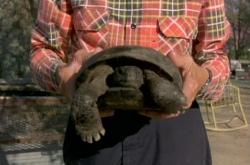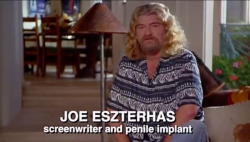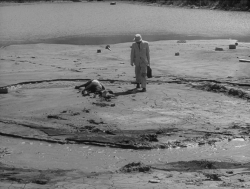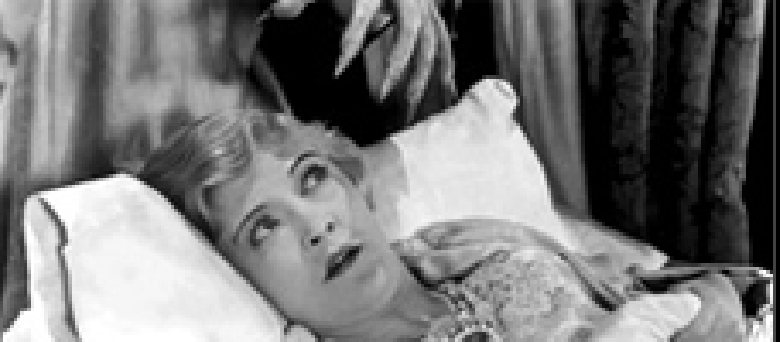Reviews
Paul Leni
USA, 1927
Credits
Review by Ian Johnston
Posted on 18 December 2007
Source Kino DVD (American Silent Horror Collection)
Related articles
Reviews The Penalty
The old dark house on the hill, ominous and threatening, its grim façade redolent of the horrors within, is an icon of the classic black-and-white horror film, and in particular those produced out of Universal Studios. It’s the very name - The Old Dark House - of James Whale’s follow-up to Frankenstein, and we can follow the line of creaky Gothic houses right through to the one that sits over the Bates Motel. Here in The Cat and the Canary we have what is Universal’s first Old House horror film. It’s not Hollywood’s first, though, as it was the success of The Bat, directed by Roland West at United Artists, that was the impetus for a long line of similar films.
The Cat and the Canary was originally a stage play by one John Willard, the theatre being the venue for many of these stories in the early twentieth century, stories which then migrated over as adaptations in early cinema. It’s a mixture of horror and comedy. True, it has its share of thrills and chills - murder, secret passageways, a vanishing corpse, a werewolf’s hand emerging from a hidden compartment above a sleeping woman, danger from an escaped lunatic, chases and fights with a presumed monster - but the comedy in the end predominates. This is most apparent in the figure of Paul Jones, the nominal male hero. It’s a long time before he assumes that role; for most of the film he’s a geeky, Harold Lloyd-like comical figure, frightened outside the house by a black cat and a burst tyre, and, once he’s inside, hiding under the bed in the room occupied by his cousin Cicely and formidable Aunt Susan (also vouchsafing him a nice view of Cicely’s legs as she undresses.) No surprise, then, that this role was taken by Bob Hope in the 1939 remake.
The Old Dark House of this film is the isolated mansion of millionaire Cyrus West which has lain gathering dust and cobwebs since West’s death, its lone occupant being West’s strange and forbidding faithful servant Mammy Pleasant. Now twenty years have elapsed and the time has come, in accordance with West’s explicit wishes, for the reading of his will. First on the scene is the lawyer, Roger Crosby, who’s concerned to discover that someone has already got into the safe holding the will and other documents. He’s then followed by West’s relatives and heirs, all arriving in dribs and drabs: feuding cousins Harry Blythe and Charlie Wilder; finicky old maid Aunt Susan; her niece and constant companion young Cicely; the gawky and decidedly unheroic Paul Jones; and, arriving later than anyone else, the film’s heroine (who, accordingly, isn’t given any comic business to attend to) Annabelle West.
Cyrus West’s will is a piece of belated revenge on his part. He resented his avaricious relatives attending on him only for the sake of his money and saw them as cats circling a canary. This is the meaning of the film’s title, although the role of the threatened canary that Cyrus West holds in his own mind soon passes to the vulnerable Annabelle, who comes under threat in a far more overt and direct way than he ever did. This animal imagery is also used when the asylum guard describes the escaped lunatic as a maniac who thinks he’s a cat and tears his victims as if they were canaries.
So, through this will Cyrus West plans to deliberately lead his relatives on after his death (even the comically sympathetic Paul will sit there awaiting the will-reading by doodling the word “millionaire” on the paper in front of him) and just as deliberately disappoint them by making the youngest of them, the one too young to have been a “cat” towards him, his sole heir. But West was aware of his relatives’ disrespect towards him and their image of him as a crazy madman, so he covers himself with an extra clause in the will. Annabelle has to spend the night in the mansion as do the other relatives—their incentive is that a doctor will appear the next morning to test Annabelle’s sanity and if he rules against her, the West fortune will go to another relative named in a second sealed document. (There’s also another sealed letter detailing the location of the missing West diamonds.)
It’s no surprise, then, that this mysterious second relative is soon working behind the scenes. Crosby is about to reveal to Annabelle the identity of the next heir in line when the wall panel behind him opens and pulls him inside, never to be seen alive again. This turn of the events was already prepared for us a moment before when Crosby is unaware that the wall bookcase behind him is opening and closing slightly, and in fact the hidden passageway motif occurs again and again. Annabelle locates through trial and error the hiding-place for the West diamonds, there’s a classic image of Annabelle sleeping on large white pillows while a hairy hand emerges from the wall behind her, Crosby’s corpse falls out when a wall panel opens, and when Paul turns into hero mode, he sets off down the hidden passageway to do battle with the monster.
A vanishing lawyer - and then a vanishing corpse - do great things, as was of course the intention, for sowing doubts about the state of Annabelle’s sanity, and the sudden news of the escape of the serial-killer lunatic only throws one more source of danger into the mix. Still, the comedy elements predominate over the horror/thriller aspects. We see that with Paul’s arrival, frightened by the black cat and the sound of the burst tyre, where his attempts to tell his story are repeatedly interrupted by another set of handshakes with a new relative. This kind of silent comedy gag recurs throughout the film. Two good examples: Aunt Susan moves behind Cecily to suddenly reveal the fearful Paul who had been hiding behind the both of them; a hand rises up on to the back of the sofa which we assume is once again the “werewolf“‘s until Aunt Susan reveals herself as she stands up.
All of this gives The Cat and the Canary some interest as a mildly amusing horror-thriller-comedy hybrid, but what really makes the film is the visual look that it has been given. That came from German director Paul Leni, invited to Hollywood - in the same way that a host of other talented Europeans were in the twenties - by Universal Studios head Carl Laemmle. Leni, like some many other figure in German Expressionist cinema, had a background in Max Reinhardt’s influential theatre, and his most well-known German film was Waxworks, a rather derivative mix of The Cabinet of Dr. Caligari and Fritz Lang’s Der Müde Tod. But in The Cat and the Canary Leni brings to his first American film the full panoply of expressionist effects. There’s an elaborately choreographed moving camera, extreme camera angles, images superimposed on others, visual distortions, curious compositions (Annabelle, for example, seen through the gaps in the back of a chair), point-of-view shots, and a constant play with darkness and shadow.
This style is apparent right from the start of the film with its ominous low-angle shot of the old dark house, on which is superimposed an image first of the seated invalid millionaire, then of one of him standing surrounded by giant medicine bottles which are themselves surrounded by repeated images of the same menacing black cat. Here we see how the story is narrated in strong visual images, with its tone established in the first scene set in the film’s “present” as the camera tracks down the winding hallway and the curtains billow up from the cold wind outside. Even the intertitles are brought into the act: for Susan and Cicely’s “Gosh, what a spooky house” the words shimmer and shake as they drop down the screen. This visual imagination - even to the extent of showing the inner workings of a clock to mark the striking of midnight - is the appeal of The Cat and the Canary. The horror is pretty light and the comedy rather strained, but there’s a pleasure in being drawn by the camera down these long shadowy corridors.
We don’t do comments anymore, but you may contact us here or find us on Twitter or Facebook.



